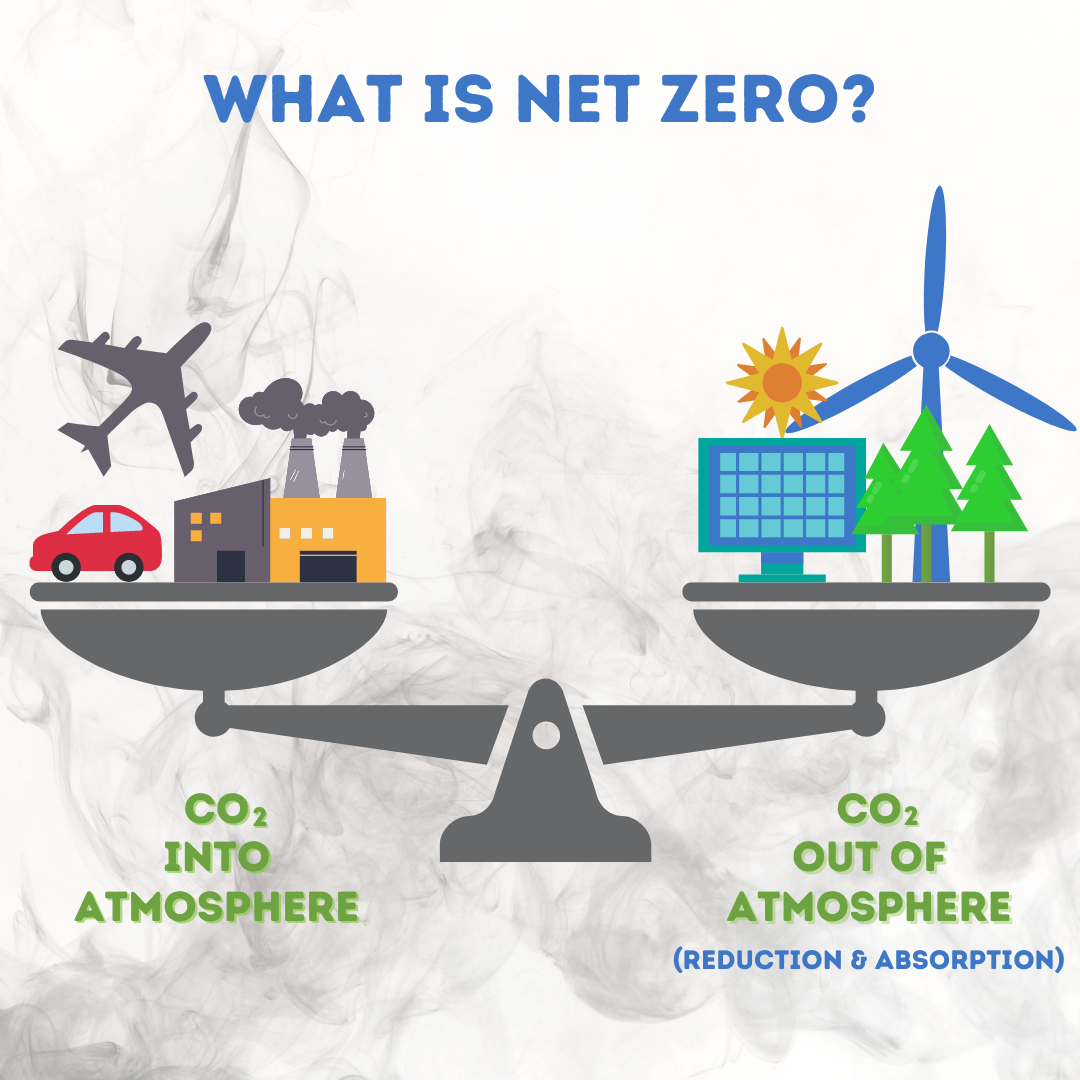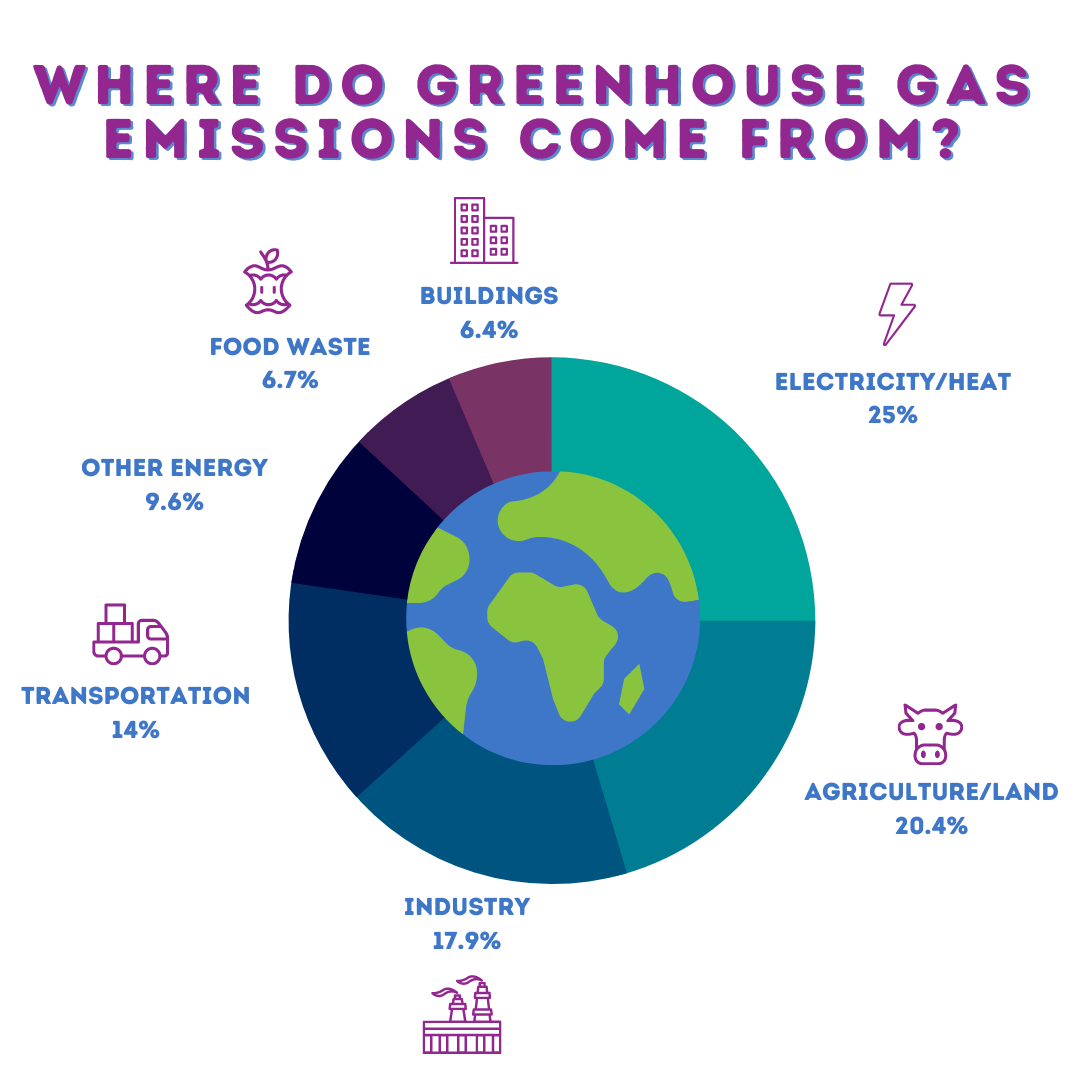NEWS
A Beginner’s Guide to Net Zero

Sustainable Westport is a non-profit organization dedicated to supporting the town’s goal of becoming a Net Zero community by 2050. We understand that some people aren’t familiar with the term Net Zero, or even fully understand why our town has committed to becoming Net Zero.
What Does “Net Zero” Even Mean?
Direct and/or indirect actions by humans (also called anthropogenic actions) have resulted in increased levels of greenhouse gases in the atmosphere, which is warming the planet. To stop the warming, the level of greenhouse gases in the atmosphere needs to decrease. There are two ways to reduce the amount of greenhouse gases in the atmosphere:
- Cut our output of greenhouse-gas emissions
- Actively remove emissions from the air (through natural or artificial means)
Put simply, “Net Zero” refers to the balance between the amount of greenhouse gas produced and the amount removed from the atmosphere. We reach “Net Zero” when the amount we add is no more than the amount taken away.


What are greenhouse gases and where do they come from?
Greenhouse gases are gases that trap heat in the atmosphere. According to the Environmental Protection Agency, the three most common greenhouse gases are carbon dioxide, methane, and nitrous oxide.
- Carbon Dioxide: mainly comes from the burning of fossil fuels like coal, natural gas and oil, solid waste, and trees and other biological materials, and is responsible for 79% of overall greenhouse gas emissions.
- Methane: is produced during the production and transport of coal, natural gas, and oil and also from livestock and other agricultural practices, as well as the decomposition of food and organic waste in landfills. Methane emissions are responsible for 11% of overall greenhouse gas emissions. It is more efficient at trapping heat than CO2 and its impact is therefore 25 times greater than CO2’s over a 100 year period!
- Nitrous Oxide: is emitted during agricultural, land use and industrial activities as well as the combustion of fossil fuels and solid waste and the treatment of wastewater. Nitrous oxide emissions are responsible for 7% of greenhouse gas emissions.
We can cut our output of greenhouse gas emissions in a number of ways, including small ways like driving less, eating less meat, and diverting our food waste, to big ways like switching over to electric vehicles and clean sources of energy like wind and solar.
Removing emissions out of the air is more complicated. Forests and oceans do this naturally, but there are also new technologies, many in their infancy, that can capture carbon dioxide in the atmosphere and dispose of it.
We need both massive reductions in emissions as well as a dramatic scale up of the technologies for negative emissions in order for countries, communities, and individuals to meet our Net Zero goals.
What do greenhouse gases have to do with climate change?
The release of greenhouse gases into the atmosphere causes the Earth’s temperature to rise by trapping heat from the sun like a blanket.
Exactly how much greenhouse gas needs to be removed from the atmosphere depends on how much emissions can be cut, but both strategies need to be employed if we are going to slow down climate change and other detrimental environmental effects to our planet.
Our climate, which is the average weather in a place over a long period of time, is directly affected by the Earth’s atmosphere. Historically, the Earth’s atmosphere has naturally maintained a balance of carbon sources (processes that release carbon into the atmosphere) and sinks (processes that capture carbon out of the atmosphere).
However, since the Industrial Revolution, humans have disrupted the balance by releasing increased amounts of greenhouse gases into the atmosphere, leading to an accelerated warming. In the past 100 years, the Earth’s temperature has risen approximately 1.2 degrees celsius (34.15 degrees fahrenheit) and the amount of CO2 in the atmosphere has increased by over 50%.
What is the impact of a warmer planet (called CLIMATE CHANGE)?
Many people think that climate change only affects temperature, but the Earth is a complex inter-connected system. In addition to continued heat waves, warmer water changes the patterns of ocean currents, affecting global weather patterns; some places will become more susceptible to drought and wildfires, while other places will be pummeled by stronger tropical storms, flooding and erosion. The increase in the planet’s temperature will continue to cause melting glaciers, sea level rise, worsening droughts and heatwaves, reduced biodiversity, extinction of species, crop failures, displacement of entire towns/cities, and the spread of infectious diseases that are more easily transmitted in a warmer climate.
The World Health Organization has classified climate change as the greatest threat to global health in the 21st century. The good news is that communities and governments around the world are taking action to reduce greenhouse gas emissions, protect carbon stored in forests and vegetation, and identify and utilize new technologies to remove carbon from the atmosphere. In the 2015 landmark Paris Agreement, many countries agreed that climate change could only be tackled if countries worked together and there they pledged to keep global warming to no more than 1.5 degrees celsius.
What does this mean for Westport?
In 2017, the Town of Westport (by RTM resolution) was one of the first municipalities in Connecticut to announce its goal of becoming Net Zero by 2050. Unlike the Paris Agreement, Westport’s RTM resolution is not singularly focused on greenhouse gas emissions, but rather a holistic view of Net Zero:
“Be it resolved that the Town of Westport shall commit to using its best efforts to continue to support climate action to meet the Paris Agreement and become a Net Zero community by the year 2050, where the community has reduced its impacts across energy, water, and waste so that they are sustainably managed, using approaches that are economically viable, of social benefit, and environmentally responsible.”
As a town, we need to be AMBITIOUS about tackling climate change and our environment. Changing individual behavior is important, but we are even more impactful together. The RTM resolution is just the beginning of creating and nurturing a sustainable town for our children and future generations of Westporters. We must take a long-term view and seek out opportunities to innovate and implement green technologies, investing now, to improve our future.
What can I do to help?
- Transportation: Drive less; fly less. Carpool. Bike and walk. Use public transportation when possible.
- Energy: Conduct a home energy audit – insulate your home better to lead to less energy consumption and waste. Switch to electric – heat pumps and induction. And better yet, explore ways to switch to renewable energy – solar and geothermal are both viable options in CT.
- Waste: Be thoughtful about your waste. Reduce and refuse single use plastics (do you need that straw or plastic utensil when you are going home to eat that take out?)
- Buy better (if you eat meat, how was the meat raised and produced?)
- Buy smarter (only buy what you need)
- Recycle right (separate glass and bring to the Transfer station)
- Compost: Divert your food scraps and join the Zero Food Waste Challenge
- Stay Informed: Keep educating yourself for your health and your family’s health and the health of the planet. We need to spread awareness so that more people in our community are aware and engaged. Sign up for our newsletter for monthly articles, tips, and sustainable news.